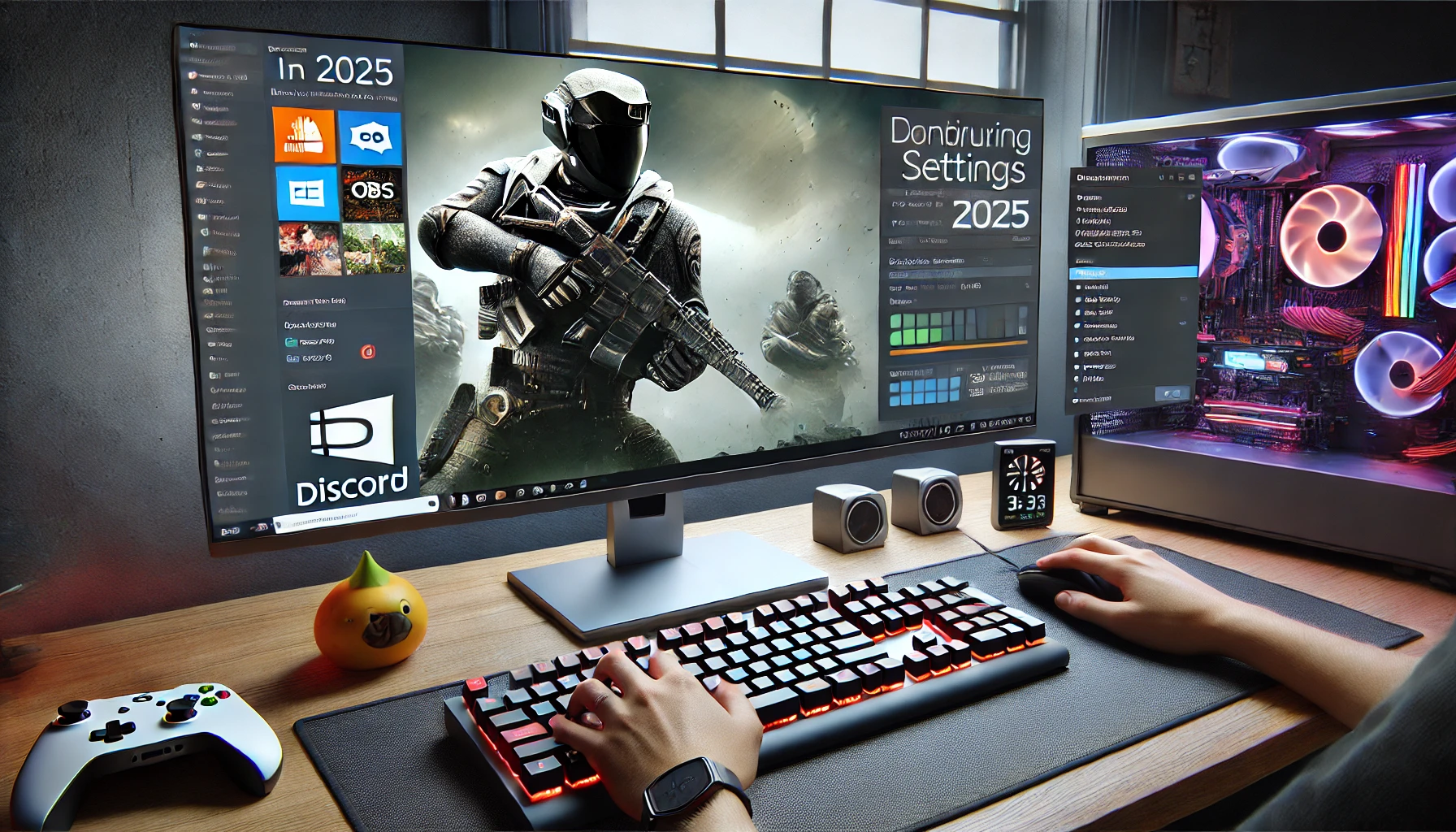Using two monitors can significantly boost your productivity, enhance your gaming experience, and improve multitasking on your PC. Whether you’re a content creator, remote worker, gamer, or just someone who wants more screen space, setting up a dual monitor system is easier than ever in 2025.
This guide will walk you through how to physically connect, configure, and optimize your dual monitor setup on Windows 11.
Why Use a Dual Monitor Setup?
A dual monitor setup offers many advantages:
- View multiple apps side by side (e.g., email + web browser)
- Extend workspace for video editing, coding, or design
- Stream games while monitoring chat or performance tools
- Keep one screen for communication (e.g., Discord, Teams) and the other for work
- Boost multitasking and efficiency
If you’ve never used two screens, it can completely change the way you work and play.
What You’ll Need
Before setting up, make sure you have:
- Two monitors (can be identical or different sizes/models)
- A graphics card or motherboard with at least two video outputs (HDMI, DisplayPort, DVI, USB-C)
- Appropriate cables (HDMI to HDMI, DP to DP, etc.)
- A Windows 11 PC
Optional:
- Monitor arms or a dual monitor stand for cleaner desk layout
- Calibration tools for color matching (if you do creative work)
Step 1: Connect Both Monitors
- Power off your PC
- Plug each monitor into a separate video output on your GPU or motherboard
- Use the best quality cable available (DisplayPort and HDMI are most common)
- Turn on the monitors and boot your PC
If both monitors are working properly, Windows 11 should automatically detect them.
Step 2: Configure Display Settings in Windows 11
- Right-click the desktop and select Display settings
- Under Rearrange your displays, you’ll see both screens represented (1 and 2)
- Click Identify to see which physical monitor is which
- Drag and reposition them according to how they’re placed on your desk
You can set one as your main display by selecting it and checking “Make this my main display.”
Step 3: Choose Display Mode
Scroll down to the Multiple displays section:
- Extend these displays: Makes the second monitor an extension of your desktop (ideal for productivity)
- Duplicate these displays: Shows the same image on both (used for presentations)
- Show only on 1/2: Disables one screen
Select Extend to take advantage of the extra screen space.
Step 4: Adjust Resolution and Refresh Rate
Click on each display and adjust:
- Resolution: Set to native resolution (e.g., 1920×1080, 2560×1440, or 4K)
- Refresh rate: Choose the highest supported rate (60Hz, 75Hz, 144Hz, or higher)
For gaming:
- Use the high-refresh monitor (144Hz+) as your main display
- Set your game to launch on that screen
For work:
- Use the sharper, larger, or color-accurate screen as your main workspace
Step 5: Optimize for Gaming and Streaming
Gamers often use dual screens to:
- Play games on one screen
- Watch tutorials, stream dashboards, or chat on the second
To move a game to a specific screen:
- Set that monitor as the main display before launching the game
- Use borderless windowed mode to quickly move the window between screens
Tools like OBS Studio can also be set up to capture from one monitor while monitoring performance on the other.
Step 6: Customize Taskbar and Display Behavior
In Settings > Personalization > Taskbar > Taskbar behaviors:
- You can choose whether the taskbar appears on one or both screens
- Hide or show system tray and icons per monitor
You can also configure:
- Night light per monitor
- Scaling (if you use one monitor vertically or at a different resolution)
- Different wallpapers on each display
Common Setup Styles
- Side-by-side (horizontal): Most common and ergonomic
- Stacked (vertical): Great for tight desks or secondary reading/reference monitors
- Ultrawide + second screen: Popular among streamers and video editors
- Laptop + external display: Ideal for mobile professionals or students
Pick the layout that best suits your space and workflow.
Troubleshooting Tips
- If a monitor isn’t detected, check cable and power connection
- Try swapping ports or updating GPU drivers
- Some GPUs disable motherboard outputs when a discrete GPU is present
- If displays flicker or drop, try using higher-quality cables
Final Thoughts
A dual monitor setup is one of the easiest and most effective upgrades you can make. Whether you’re increasing your productivity, improving your game streaming layout, or simply watching videos while working, the extra screen real estate changes everything.
